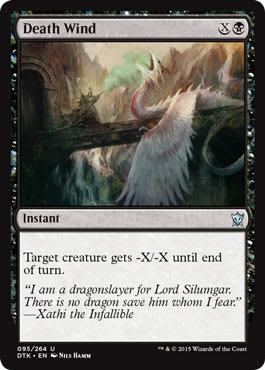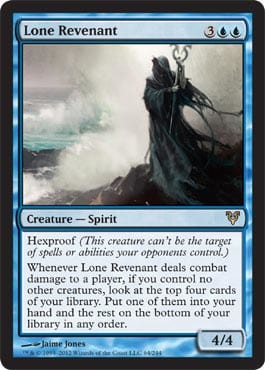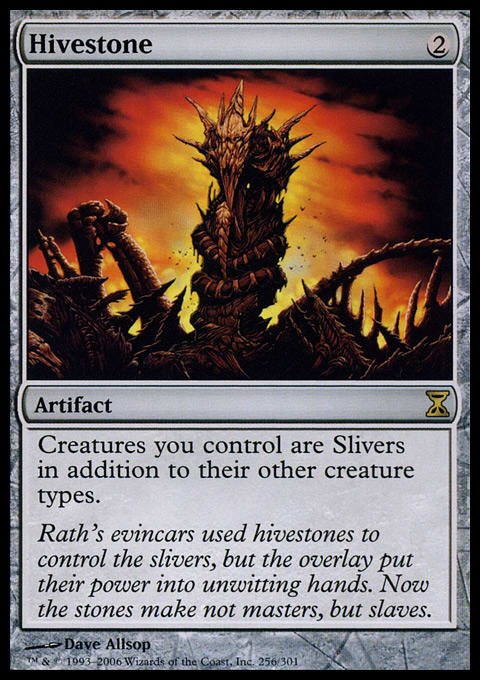When you draft, do you ever look at a pack and wish you could take three or five cards from it instead of just one? Perhaps you are drafting a two-colored deck and it’s pick three of the second pack. Sitting in front of you are two first-pick cards in your colors and a good top-three-quality artifact. All are value at this pick, and you want to snag them all, but you can’t. Does that frustrate you? Do you worry about sending the wrong signal about color because you take a bomb in one color only to leave a very powerful card in the pack of the same color? Have you ever taken a powerful card in the first few picks only to have that color dry up and wish you could take those cards back?
Then this is the Draft for you! Anaconda Draft is a Booster Draft variant that works just like all other Booster Drafts, but with one minor rules change. That change creates a completely different Draft environment. Anaconda Draft is an old spin on the game that has been around for longer than I can remember, but it’s not played much today, and that’s sad. I’ve talked about it in other articles for a paragraph or two, but today, I want to spend an entire article discussing the format, how to draft well in it, and what the metagame of it looks like.
What Is Anaconda?
Anaconda Draft is done like a normal Draft. You prefer a pod of eight people (although you can have different numbers to suit your group). You draft by opening a pack, pulling out the rules or token card and non-foil basic lands. You select a card and pass to your left. Then things morph into the crazy. Anaconda has one rule in addition to the normal drafting.
After you select a card from the pack, you may take any number of additional cards from it you wish. You must replace these extra cards with cards you have already selected.
So, let’s suppose I took a decent card in the first pack, say Death Wind from Avacyn Restored. It’s not great, but it’s reasonable as a first pick. Then, I’m passed a pack missing an uncommon with no black cards in it at all, but it features a Mist Raven and a Fettergeist. Well, maybe the guy next to me took the black card or maybe there’s a pack without any black, but I can draft the Raven and then swap my removal spell for the powerful uncommon flyer. Then, I pass the pack with the correct number of cards, now with the Death Wind in it.
Since it can take longer to draft because you’re perhaps taking more than one card, I recommend having a caller at your table. Someone needs to say, “Everybody done? Okay, pass to the left!” If you don’t, you will have big stacks behind a few players, and with players looking at their drafted stacks during most picks, people will become confused and things can become mixed up. In fact, in order to ensure that no one’s bumbled by the format, I recommend breaking each pick into a few segments. Announce people can look at their packs for twenty seconds. Then, tell them to make their picks, and give them five seconds to pick a card. Then, give them twenty seconds to look at the rest of the pack. Tell everyone to pick any additional cards and set them aside before replacing them and passing the pack. If you have a lot of people who have never done an Anaconda Draft, this can keep you from ending up with packs that have too many or too few cards in them.
Why Anaconda?
For people who draft a lot, it can stagnate. We used to have a ton of other draft variants to play around, such as Rochester and Anaconda Drafts. But now, it seems that every Draft is the same format every time. This is a great way to spice up your Drafts or inject new awesome into that triple Avacyn Restored Draft you do every Friday night.
Plus, if you try it and like it, there are many other takes on a traditional Booster Draft to consider as well. This is an easy one to try out and either keep or jettison as you choose.
How Does Anaconda Change Drafting?
There are a lot of strategies when it comes to Anaconda, and not all of them can be discussed at length in one article. Instead, let’s look at the major strategies and changes to the format due to this one little rules alteration.
First of all, in the first few picks of packs two and three, people have enough chaff from previous picks to swap out for good cards in their colors. What that means is that for the first few picks of a pack, you tend to take a few cards from your first pack, but if you are downstream of someone who is in your colors, you may not find as many quality choices as you’d like. Let’s suppose we are drafting Avacyn Restored for our examples.
Imagine I’m drafting G/U. It’s pack two, and I have some nice soulbond creatures, a few good flyers, and ground pounders. I drafted only three cards in the first pack at the end that I don’t want for my deck. I open my first booster, and I draft the Trusted Forcemage in it. Then, I swap cards for the foil Nettle Swine, Amass the Components, and Latch Seeker. I now have all of my chaff cards from pack one swapped for good cards.
Then, the pack is passed in the reverse direction as pack one, and I see two good cards in my colors that I want: Nightshade Peddler and Lone Revenant. I pick one and swap my worst card in my colors for the other. Nicely done. I’m then passed a pack, and two seats down, is a person drafted U/B, and he’s taken all of the quality blue out already. The only green card I take is Revenge of the Hunted.
Then, the next pack comes along, and that player was drafting green and took out all of the good green. Now I have a pack with no quality green or blue at pick four because it’s all been taken out. Also, it’s been passed through red, white, and black drafters, so all of the top cards are out. One of the consequences of Anaconda Draft is that there is no such thing as a very good card going late. There is no sixth-pick Pillar of Flame or twelfth-pick Moonlight Geist. What you begin to fight for are the average or deck-specific cards in the middle of packs two and three.
Take Favorable Winds for example. As everyone who knows me recalls, it’s my favorite uncommon in the set. I’d played FNM Drafts a ton of weeks in a row now, and if I can grab Favorable Winds early pack one, I will force blue and either white or black to support it. However, in a lot of places, it’s not a top pick, and I understand. But to ensure that I gain a card that breaks everything from Demonic Taskmaster to Scrapskin Drake, I will take it every time and won’t look back. Cards that are situational—such as this one or Levitation in Magic 2012—are the cards you fight over and look for in your second packs. You also look for people tossing out a card that may not be useful to that player but that is good for you.
Remember in my above example when I took the Peddler and Revenant in pick two of pack two and I had to throw in a playable. Suppose that playable was something simple such as Ghostly Flicker. If you are two places downstream, that could be a valuable card to you if you don’t have one yet. Maybe I threw in an Angel's Tomb, which is great in some decks and horrible in others. If you are in the next seat and you already have ten creatures for your deck, this is a no-brainer for you. So you are looking to procure the cards that others toss out to enhance your deck. (Plus, there aren’t as many chaff cards out there as one might think. A late twelfth-pick Pathbreaker Wurm for one player is a fine choice for another.)
As I’ve discussed, in the later packs, you can expect few good cards to still be floating around. But in pack one, this happens more frequently because players have not drafted chaff yet. Have you ever been in that Draft where your first four picks are all right, and then around pick five, you’re passed a pack that has two cards, both in the same color and both of which are better than several of the cards you’ve already drafted? Well, now you can take them both and swap your picks for them. They linger on pack one because people often have drafted top-quality cards and don’t want to swap their broken rares or uncommons for an extra solid card in a different color. So, you swap a third- or fourth-pick to snag both of these cards, and someone else takes that card in a later pick. You can see higher picks being swapped back into the pack later in pack one, so good stuff can surprise you.
Another strategy is to switch colors in pack two. I played with a Draft online recently, and here were my first six picks in an Avacyn Restored Draft: Terminus, Barter in Blood, Archangel, Mist Raven, Peel from Reality, and Butcher Ghoul. The rest of the pack gave me good white. I finished the pack with strong white and two good cards for either blue or black, but there was no clear winner there. A fouth-pick Raven suggested few blue players to that side and maybe good blue in pack three, but I didn’t see a lot of blue afterward, so it could have been a random thing.
Perhaps the person to my immediate right passed the Raven, but then saw another good blue card, saw that no one was drafting it, and moved in. I then opened pack two, and there was good white and either amazing black or blue. In Anaconda Draft, I could switch out of whichever color was not working for this pack and switch into one that does. Maybe I’d grab a Death Wind, Searchlight Geist, and Harvester of Souls while also grabbing two solid white cards. Or perhaps if I hadn’t opened up good black or blue, but solid white instead, I could instead grab a few white cards and then be passed one or the other in style; and for a pack or two, I could take six or seven goods and slide out of one color and into another. Anaconda Draft is very flexible and forgiving to bad signals that can otherwise mess you up.
I was drafting next to a guy a few weeks ago, and I took Death Wind pick one, and he passed me a Death Wind pick two and another good black card pick three. He was clearly sending me a signal, right? But on pick three, he took Harvester of Souls and cut off my black. If we had been playing Anaconda Draft, I could send away my black after it was cut off hard, and I could enter another open color later and in later packs to fix things. The format is forgiving.
Some Final Anaconda Thoughts
Expect to see the same card a few times. Bad cards in Limited often are exchanged, taken, and then swapped out again. In fact, I have a story from Anaconda using that point.
It was the era of Time Spiral, and we did an Anaconda Draft with that block. In the first pack, I had started a three-colored deck around green with two Gemhide Slivers. I had also taken another Sliver, and I grabbed a fourth Sliver in the back half of the Draft. Someone had opened a Hivestone, which is an amazing card for my deck if I got Slivers, but otherwise, it is chaff. It went late, and I grabbed it pick thirteen or so.
Then, pack two was opened, and I anacondad all the Slivers in my colors, sending back the Hivestone. By taking most of the Slivers from the second pack, very few people saw many Slivers at all, and again, the Hivestone was not valued. I picked it up after the wheel. I even joked to my friends that the Hivestone was back! Who will take it?
In pack three, I opened more Slivers, again took them all, and cut off that tribe. I tossed out the Hivestone for something good and then took it really late in pack three. Despite Hivestone arguably being among the best three cards in my deck, I was able to ship it again and again for good cards. I then revealed that I had eight good Slivers and that Hivestone made my whole team Slivers, and guys like Sinew Sliver were amazing for me. With few other Slivers out there to worry about, I was able to push my deck with a janky card.
That story is fun, but it also demonstrates the difference between Anaconda Draft and others. A card that is amazing for your deck but not good for others is going to have value as a swap. You can snag it later. But it’s a gamble each time, and you have to beware.
A good example of such a swap is the aforementioned Levitation. Most blue decks don’t want it because they have flyers or don’t want to waste a card on it, so in Magic 2012, it goes late. But if you are playing blue and green, you often have a lot of great ground dudes that would love to jump into the air permanently.
Levitation might be your Hivestone. But if you gamble too much, someone else may take it to have in his sideboard or because he has a lot of bigger ground creatures in some odd red concoction with blue and decided to keep it as well. Play Anaconda Draft, and find your Hivestone!
Any Draft variant has the same cards and same archetypes. Anaconda changes how they get to you, but it’s important to realize that it’s still just a Draft. Plus, it’s a fun Draft! Try it out and see if you like it enough to keep it.
See you next week,
Abe Sargent


























